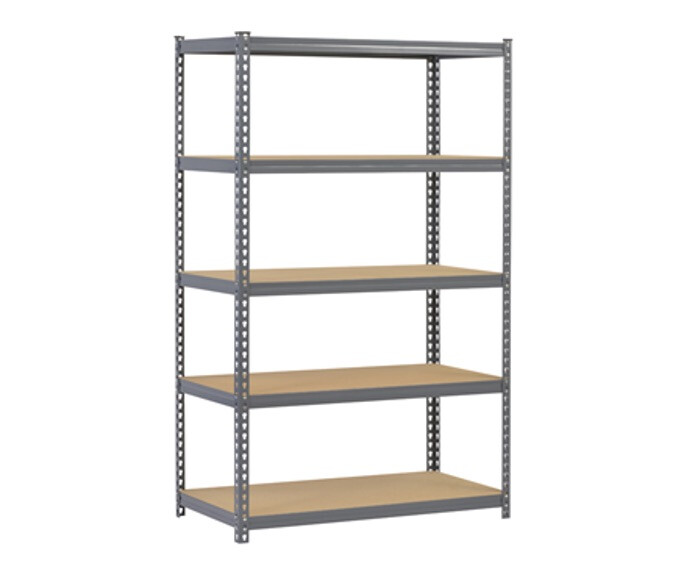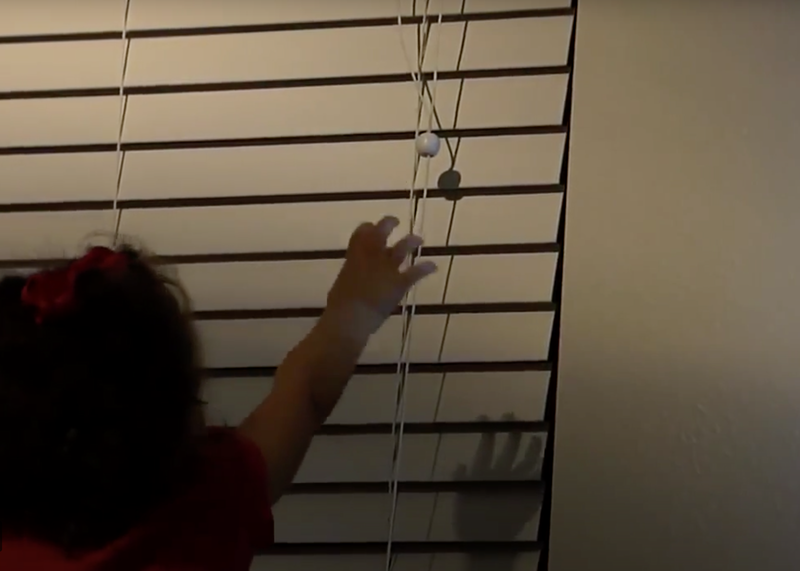Home Maintenance Checklist: 15 Things to Do for Spring

It's finally the season when everything springs into action again — including you. Now’s the time to roll up your sleeves and take care of the things you’ve neglected during the winter months. You’ll want to make sure your home is ready for April showers and the impending summer weather.
This May Also Interest You: Don’t Go Broke for Repairs: Get Ahead on Home Maintenance
Spring cleaning is a good place to start, but the turn of the season also presents an opportunity to be more thorough with your home maintenance. Here are 15 things you need to do, inside and out, to prep your home for spring.
Exterior Spring Home Maintenance
1. Take a Look at the Roof
Even if your roof didn't take a beating from snowy conditions, spring is still a great time to give it a once over. Safety first: If you're using a ladder, make sure it's stable before you attempt to climb. Look for missing or damaged shingles and signs of leaking or cracking. Contact a professional in case of any issues.
You may also consider removing stains on your roof during spring. If you notice any dark streaks, algae are the likely culprit. The only harm in that case is cosmetic. If you notice moss, on the other hand, you should definitely clean it. Moss can cause asphalt shingles to lift, curl or blow off in high winds. To clean algae or moss, apply a solution of equal parts bleach and water. After about 15 minutes, rinse it off. Don’t pressure wash or scrub as you might damage the shingles.

2. Clean the Gutters
Clean all debris and leaves out of the downspouts and gutters. Reattach the gutters if they are sagging or consider replacing them if they are beyond repair. Notice any holes? Prevent leaks by caulking them. Keep in mind that downspouts should face away from your home to improve drainage.
3. Inspect the Concrete
Take a walk around your home and check for cracking along the driveway, pool deck or walkways. Fill cracks using silicone caulk or concrete fillers. If concrete cracks are beyond this simple fix, consider replacing the concrete altogether.
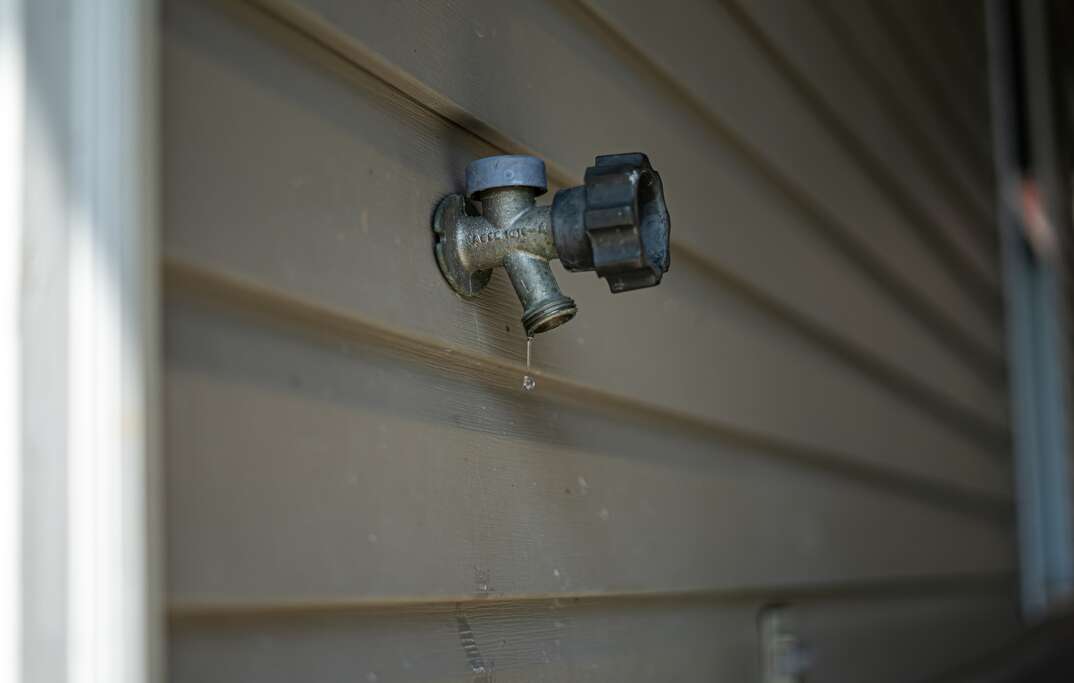
4. Run Outside Faucets
Test outside faucets by first letting them run. Place your finger over the opening. If the flow of water stops, you may need to call a professional to inspect your pipes. Also, look for any signs of leaking.
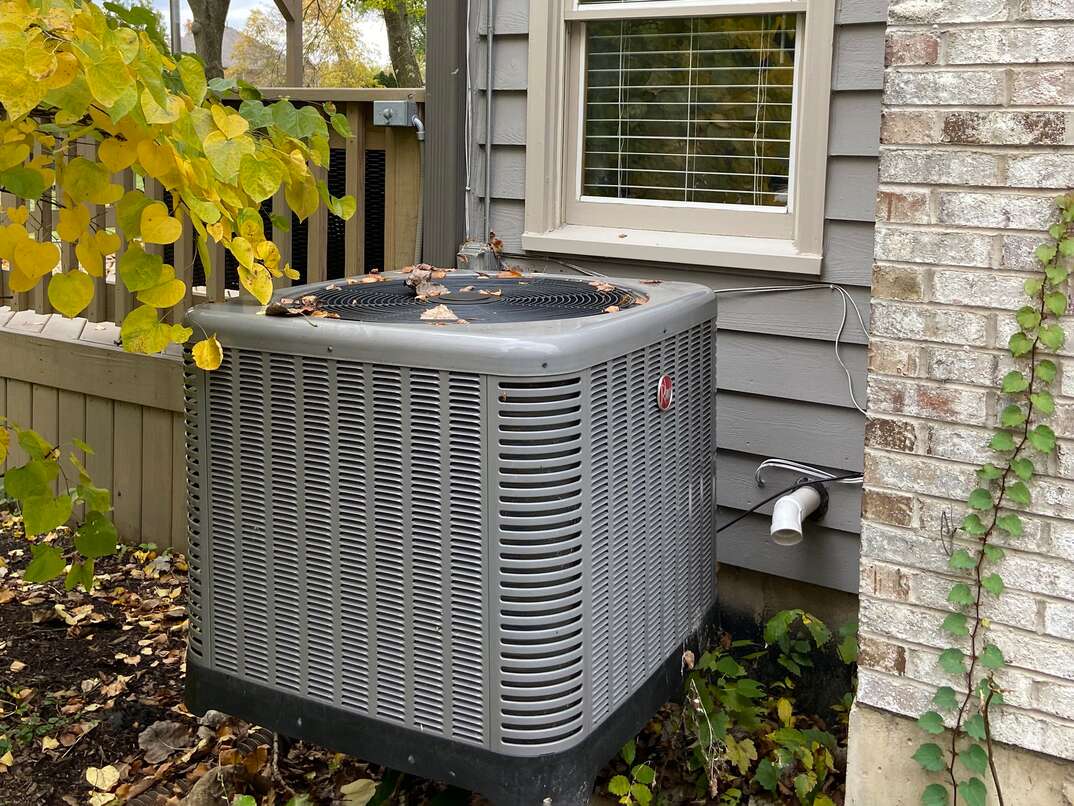
5. Give Your AC Some Attention
Remove debris from around the unit, replace filters and clean ducts and vents. If your filters are clogged, air can't easily pass through and your unit must work harder to cool your home. Clogged filters can lead to lower air quality in your home. Don't skip this step; you may be able to lower your energy consumption by up to 15%.
You can also schedule a professional tune-up. An expert AC technician can check your system's efficiency, check coolant levels and address any issues before the summer heat arrives.
6. Check Out the Deck
When inspecting your deck, look for water stains, warping or discoloration. Watch out for loose or rusty nails and perform any necessary maintenance to secure stairs and railings. If you find lifting or rotting boards, replace them.
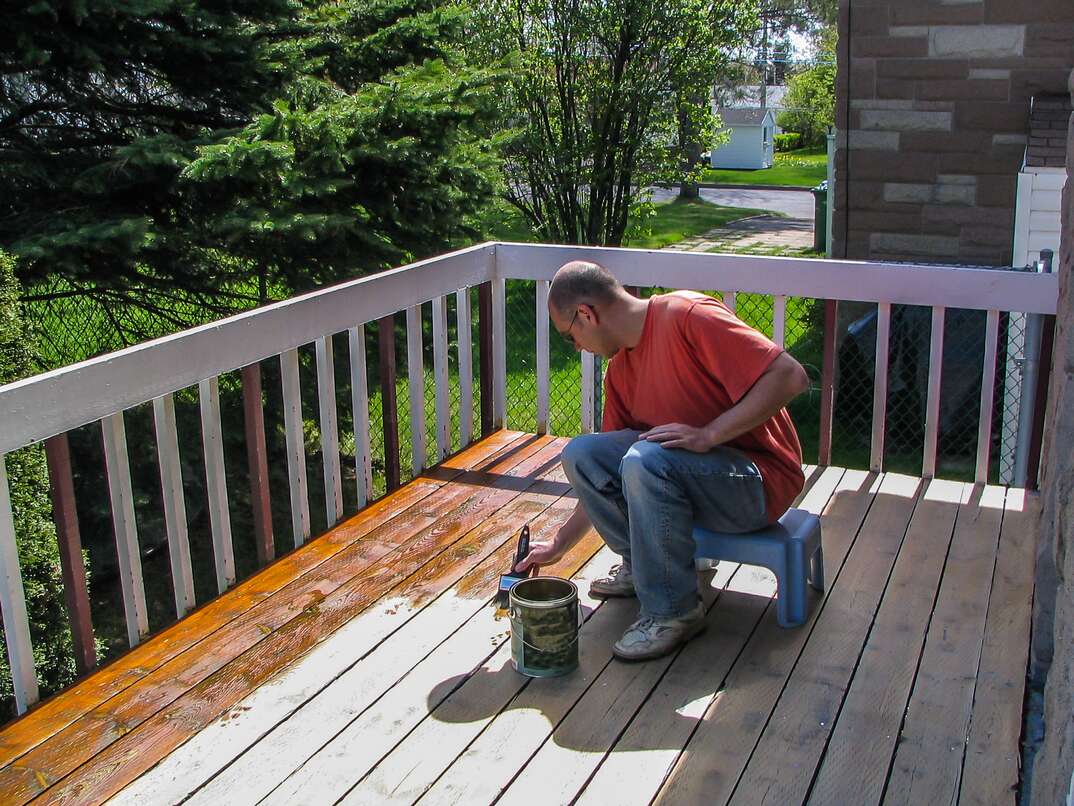
7. Repair and Reseal Woodwork
Rails, fences, trellises and other wood features need some love, too. These structures are prone to decay and rot if left alone.
If you have wooden fences, repair any damage to the panels. Split or broken pieces can be glued back together if the wood is dry. Support the pieces with tape as the glue sets. Replace planks that are too damaged for repair.
Use a power washer to revitalize tired wood, then use wood oils and wood preserves to protect it. Decking oil is the best for fence treatment because it keeps the wood supple and water-resistant. Exterior wood oil helps preserve your wood and can prolong the life of your fence.
8. Run the Sprinklers
Give your sprinklers a test run. Keep an eye out for leaks and malfunctioning sprinkler heads. Make sure the sprinklers are watering your grass and not porches or sidewalks.
9. Inspect Windows and Doors
Fix or replace the screens on windows and doors to keep bugs from entering your home. This is also a good time to wash your windows. Clean the tracts and seals with a vacuum attachment or a soft brush before you start washing the panes.
Don't forget to clean the weep holes on storm windows. Test that these essential drain holes are open by pouring some water into the sill. You can also use a thin wire to clear out the holes.
Finally, check for tall grasses or stagnant water near your windows. Stagnant water can be a breeding ground for mosquitoes.
10. Spruce Up Your Lawn and Landscaping
Trim any overgrowth and clear your landscaping. Spring is also the best time to tidy up flowerbeds and give them a good facelift. You can also use dead organic matter from the compost pile as fertilizer. Add a layer of gravel on top of the soil to suppress weeds. Make sure to use compacted soil in low areas of your yard as rain can cause foundation damage and flooding.
Tend to your lawn now to ensure lush green grass during summer. Start by raking the lawn deeply to get rid of thatch and dead grass. This will also allow fertilizer and seed to penetrate easily. After cultivating, ensure that the lawn is firmed and ready for sowing. Try a shade-tolerance seed mix if your yard has a lot of tree cover or use a hard-wearing mix if your lawn gets a lot of traffic in the summer. Bald patches should be overseeded. Apply nitrogen fertilizer to give your grass a boost.
If you plan on growing vegetables, prepare the beds by getting rid of weeds and forking in garden compost. Cover the beds with plastic sheets to keep the soil warm until you are ready to sow the plants.
More Related Articles:
- Basic Lawn Care and Maintenance Tips
- 8 Easy DIY Home Maintenance Tips
- Extending the Life of Your Roof in 3 Easy Steps
- How Much Does a Sprinkler System Cost?
- 4 Steps for Proper Electrical Maintenance
Interior Spring Home Maintenance
1. Open the Windows
Now that it's warming up, you can let in fresh air without getting too chilly. Open all the windows to get rid of stagnant air and aerate your home. While your windows are open, clean interior windowsills.
2. Check the Basement and Attic
Head into the basement and attic to look for signs of moisture that you might not have noticed. Look for leaks, water stains and mold. Any odd smells — like mold or mildew — should be addressed immediately. Find and seal off the source of moisture to prevent serious water damage or mold issues.
3. Perform Routine Home Safety Checks
Safety and emergency features are easy to forget about because you don’t use them often. Performing routine checks can be beneficial. Change the batteries in smoke and carbon monoxide detectors. Check fire extinguishers to make sure the needle is in the green zone. Exhaust fans should also be working well.
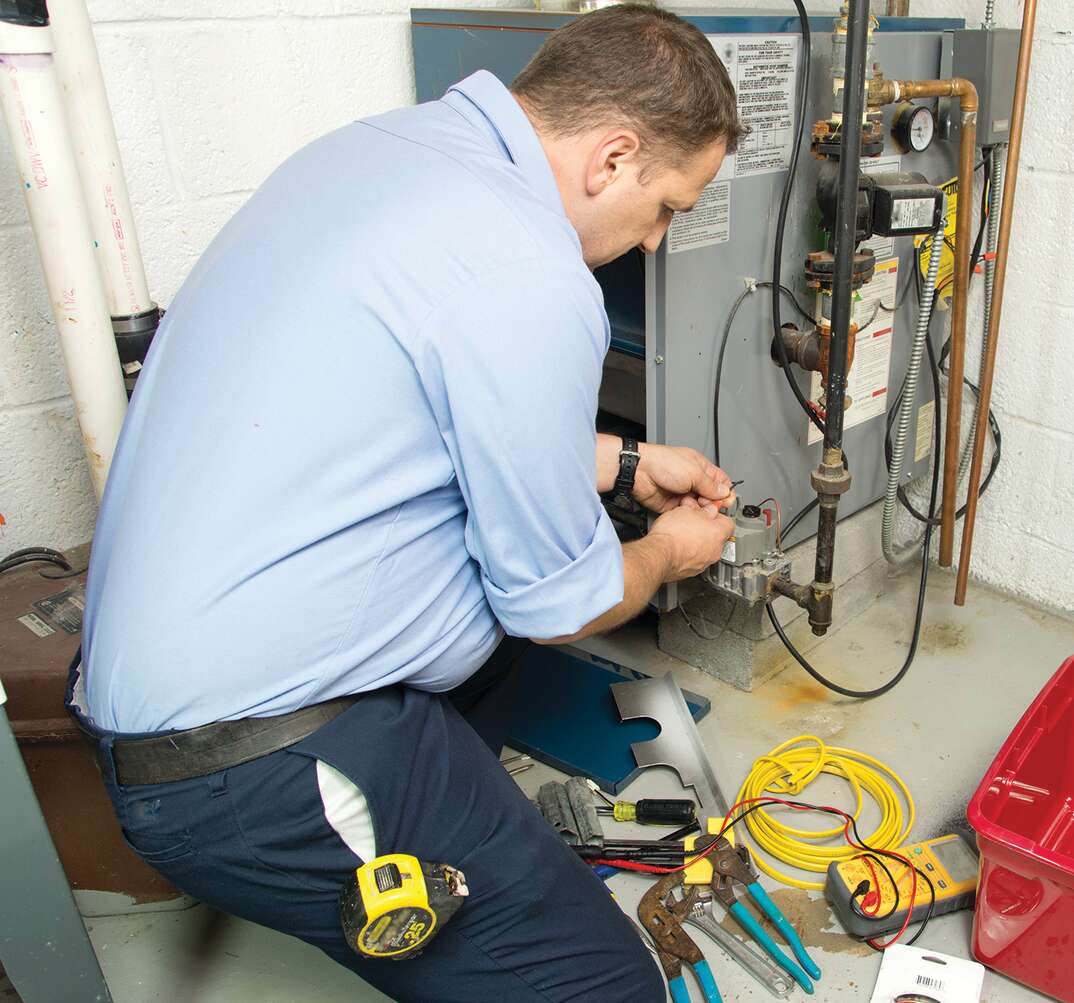
4. Clean the Furnace
After working overtime during the winter, your furnace could probably use some TLC. Clean the motor, filler system and blower of your furnace system. If you’re not comfortable doing it yourself, contact an HVAC technician.
5. Consider Upgrades
Spring is a great time to replace and repair lights, appliances and other systems around your home. While repairing or replacing, you may consider leveling up to more energy-efficient options. Here are some upgrades to think about:

Insulation
Adding insulation to your basement or crawl space can help your house stay cool in summer and retain heat during winter. While you're at it, seal ducts and ensure that they are straight and connected securely.
Doors and Windows
Consider installing more energy-efficient skylights. Putting in storm doors and windows can save energy and improve temperature regulation. Storm windows can reduce heat loss by up to 50%.
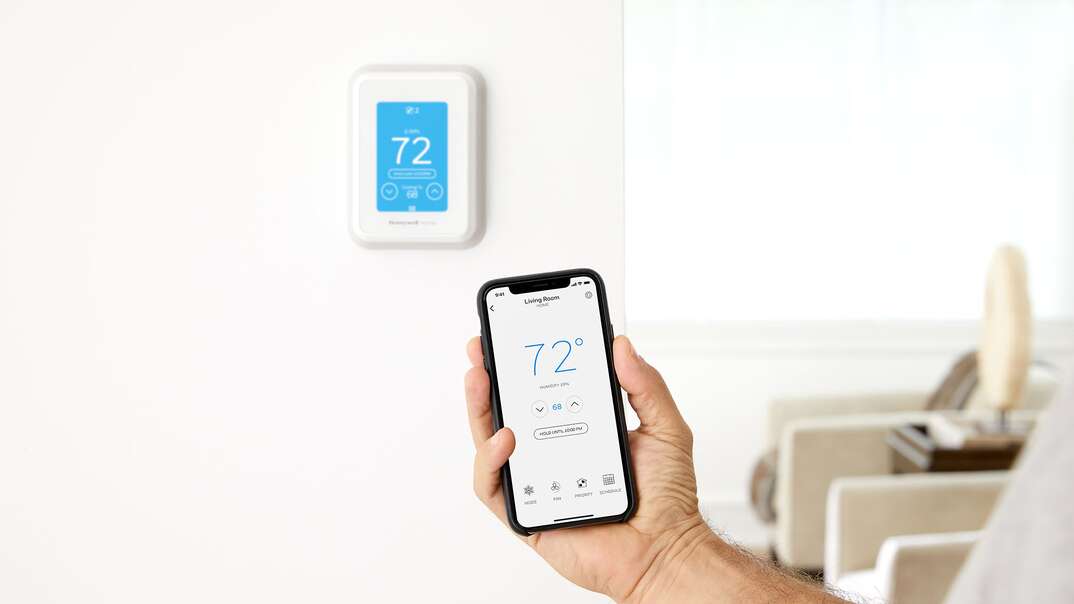
Programmable Thermostat
Installing a programmable thermostat can help you save up to 10% a year on energy costs by adapting your heating and cooling settings based on whether you are home or away. You can place sensors around your home to ensure that you only heat occupied rooms.
Energy-Efficient Systems and Appliances
An on-demand, tankless water heater can be more efficient than a traditional system with a reservoir. If you don’t need an upgrade, you can consider insulating your water heater instead.
Heating and cooling systems are huge energy consumers. Swapping them out for more energy-efficient models can lower your energy bills. The same is true of appliances and electronics that use a lot of power, like refrigerators and clothes dryers.
Since we’re all home now more than ever, being prepared for unexpected home repairs with a plan from HomeServe is important. Having a plan in place gives you peace of mind knowing that you can simply call our 24/7 repair hotline for covered breakdowns. See what plans are available in your neighborhood.
